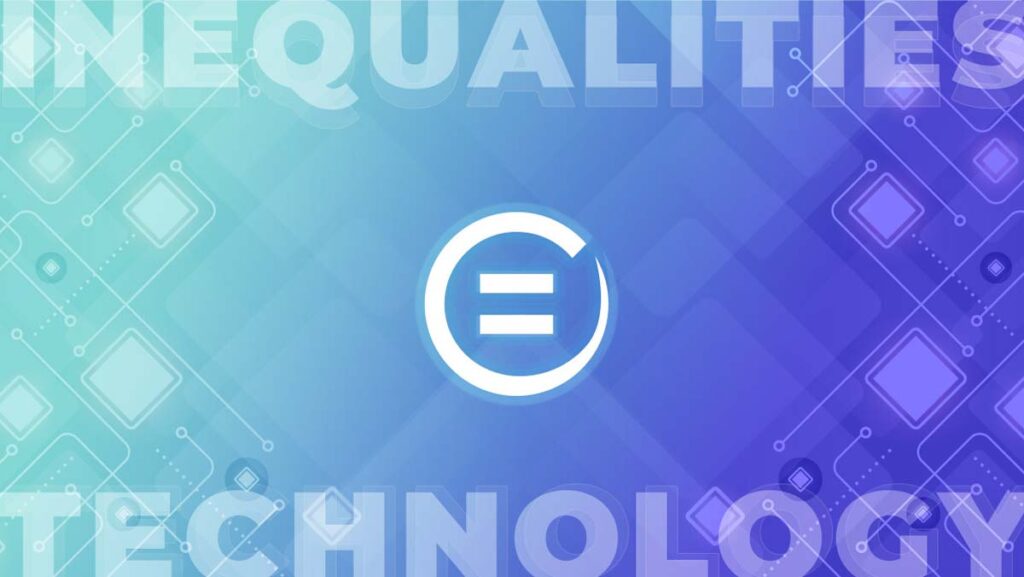
The world has been plagued with severe problems of inequality. Although awareness has been rising up worldwide, several events including conflicts, wars and the recent COVID-19 pandemic has emphasized the dark reality that inequality is still a major issue.
Poor countries, vulnerable populations have clearly been at the center of the sanitary cyclone that ravaged the globe. Economic difficulties, rising unemployment levels, and crumbling healthcare systems have constituted the main witnesses to the problem.
Inequality takes all shapes, forms and scales. As highlighted in a United Nations’ report, financial inequality is not the only problem, but there rather exist other factors that illustrate the complexity of the problem including “gender, age, origin, ethnicity, disability, sexual orientation, class, and religion”. Emerging sources of inequality can be added to the list such as access to technology.
The amplitude of the problem has pushed the UN to classify the need of reducing inequality as one of its 17 sustainable development goals (SDGs). The main targets of SDG 10 include having a sustainable income among the least fortunate, promoting socio-economic inclusion of everyone “irrespective of age, sex, disability, race, ethnicity, origin, religion or economic or other status”, eliminating discriminatory laws and guaranteeing equality, among others. The targets of the goal apply to inequalities inside a given country and in a broader context, among countries in the world.
The Promises of Technology
Technology has undoubtedly been a major player in transforming nearly every profitable industry. Whether it is artificial intelligence, internet of things, robotics, or digitalization, new practices have emerged that aim at streamlining traditional approaches into more efficient and profitable ones. Bridging inequalities is certainly a complex task due to the number of factors contributing to the problem itself. Technology can in a sense alleviate the problem through the development of solutions that reduce the effect of inequality without necessarily eradicating it.
Technology can also be the source of inequality and in that case guaranteeing the access to technology constitutes the solution itself. This has been the case in underdeveloped countries notably in Africa and in other secluded areas around the world. The access to technology problem has been amplified by the latest pandemic that left millions stranded at home without proper connectivity, work and education.
Access to Technology as a Key Enabler to Equality
Guaranteeing access to technology, information and connecting groups of people together is probably the best way to advance towards meeting SDG 10. Social and economic growth, free access to education, facilitating remote work and creating new job opportunities, and more importantly connecting to world network are side benefits from this access to technology.
Education has been one focus areas in the fight against inequalities. Several outreach programs have been developed targeting areas with high percentage of education exclusion, with women constituting a large portion of the excluded group. A lot of these programs rely on advances in technology to deliver the proper content and continuously monitor the progress the students. Several international organizations that as the international telecommunications union (ITU) have committed to reducing inequalities by facilitating access to information. Solutions such as satellite communications have been investigated to enable connectivity in remote and underserved areas.

Lack for technology also secludes subjects from the decision making process and thus promotes political inequality. The access to information is therefore crucial to engage people and facilitate their participation in the political life. Civocracy an example of digital platform that promotes citizen engagement by improvement the relationship with governmental organizations.
Technology and Mobility-Related Inequalities
The inclusion of persons with disability has been an integral component of UN’s SDG 10. Disabled persons are among the most marginalized categories in any society lacking access to basic services, jobs, and are usually well behind in the income scale.
Assistive technology can play an important role in reducing the level of inequality experienced by individuals with a disability, by improving their mobility and functional independence and subsequently facilitating the smooth integration of disabled people in the daily life. Mooevo, a Spanish company is an example of companies developing solutions to facilitate the mobility of disabled people. Their Mooevo Go system transforms regular wheelchairs into an electrically-powered transportation system that carries both the disabled individual and accompanying person.
Dreamwaves is another fascinating smartphone application that improves accessibility and autonomy for visually impaired individuals. It uses spatial audio to facilitate the navigation in public space making the experience as normal as possible.
Another mobility-related inequality comes the migration of groups of people mostly due to war, conflicts and natural disasters. The recent events between Russia and Ukraine, in Syria, and Afghanistan have led to thousands of persons forcibly fleeing their countries. To add to their ordeal, they are usually faced with numerous challenges when integrating their host community, including religious and language barriers, and ensuring their financial sustainability in a place where they need to start all-over again. While the help from the local community is primordial to guarantee a smooth integration, technology greatly facilitates the process of reducing potential temporary or even long-lasting inequalities. Automatic translation apps, educational tools, and digital wallets are key technology solutions that help in that direction.
Summary
Inequality is a problem that existed thousands of years go and will certainly remain as long as large groups of individuals are living together. The United Nations has been promoting key sustainability goals with specific targets to be achieved by 2030. Technology is a key enabler to meet the project deadline. In terms of SDG 10, technology can greatly help in reducing different forms of inequalities by channeling developed solutions for a good purpose. Smartphone applications, telecommunication systems, robots and smart vehicles are all examples for tech solution that could have a great impact. A better collaboration should exist though between the UN and technology companies to develop tailored solutions. This collaboration will also increase the awareness to what is needed to face and prepare for future challenges such as wars, environmental crisis, pandemics, etc.
Inside Telecom provides you with an extensive list of content covering all aspects of the tech industry. Keep an eye on our Technology and Impact space to stay informed and up-to-date with our daily articles.